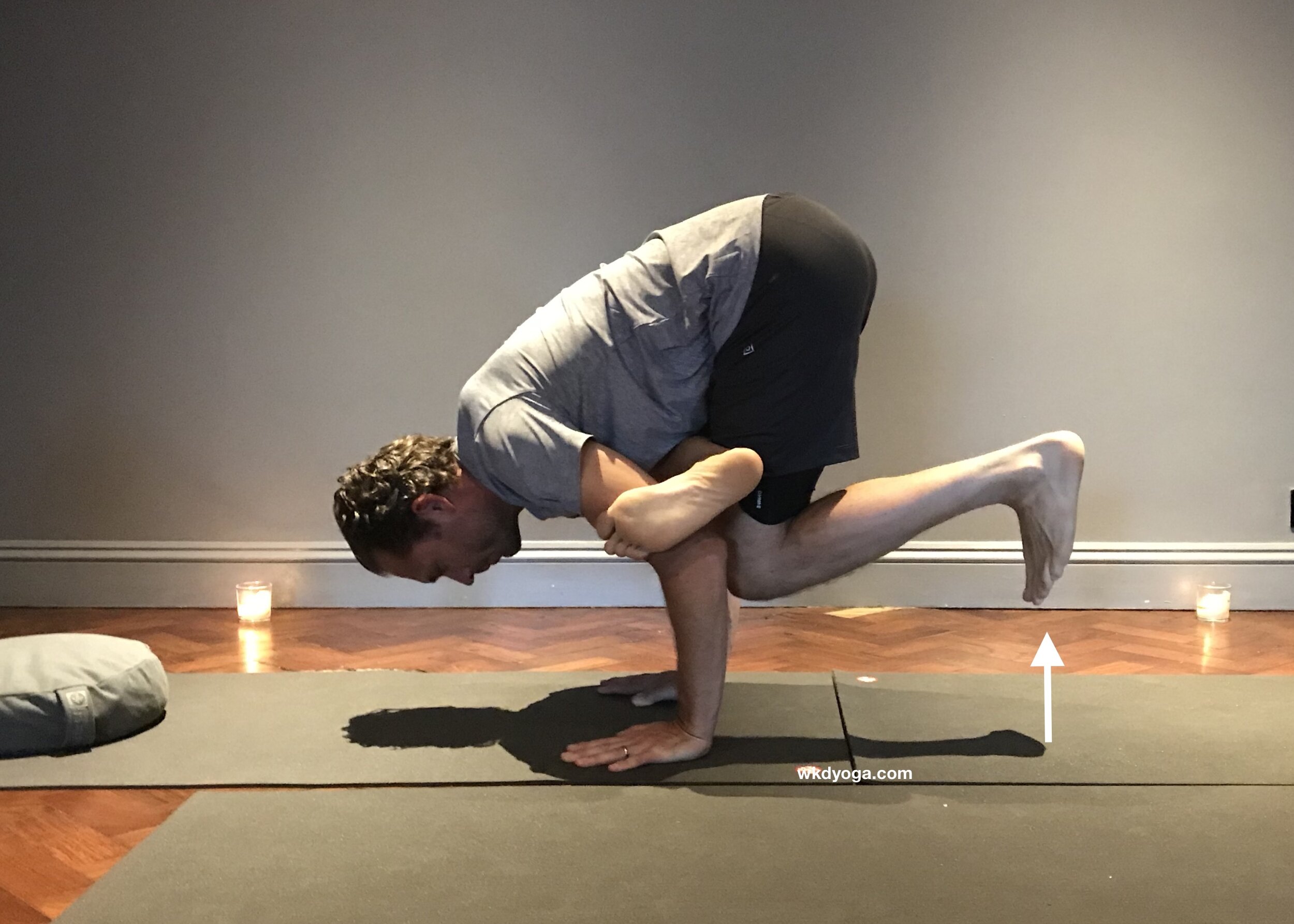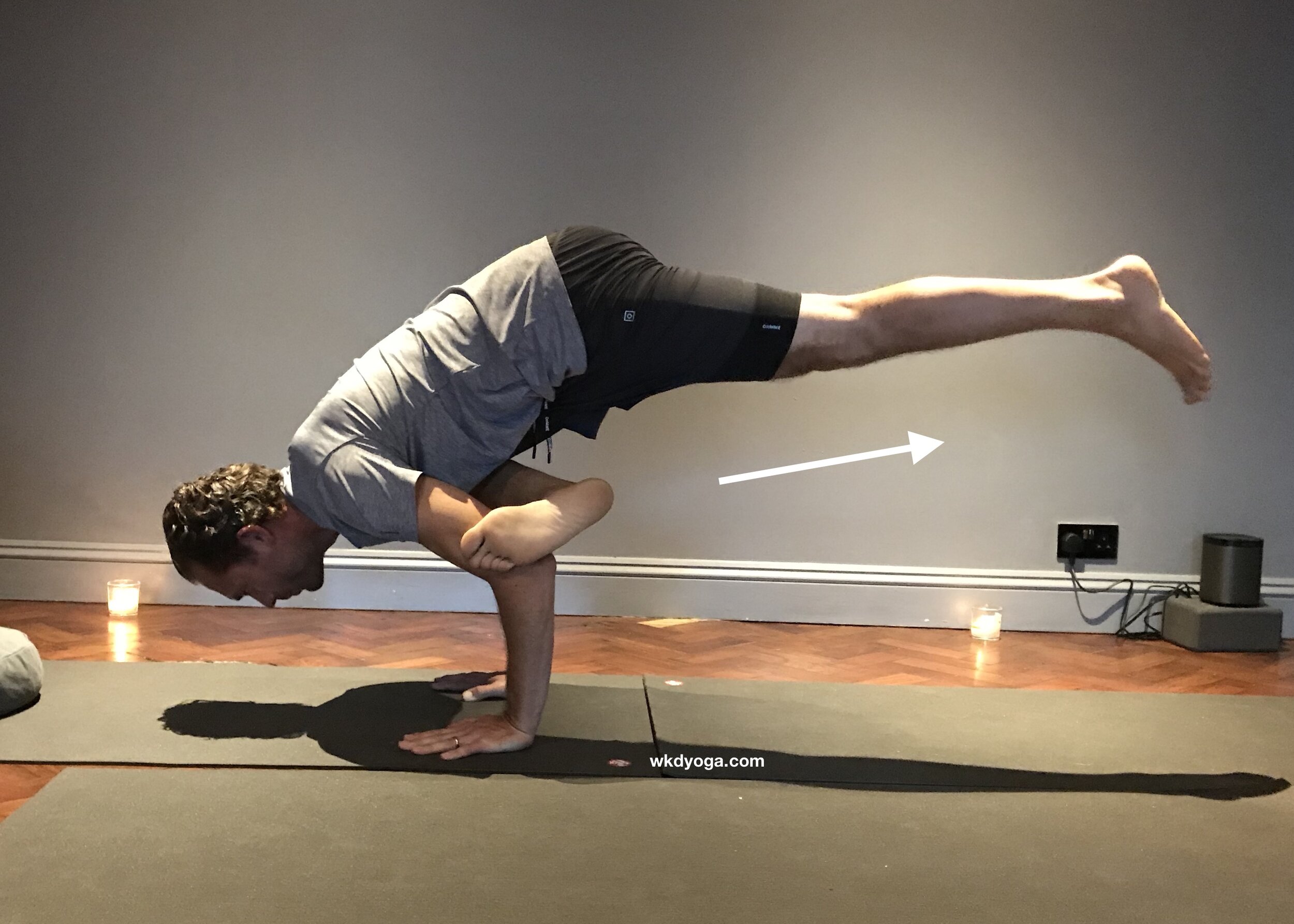eka pada galavasana
Eka: one, Pada: foot, Galava: a Hindu sage, Asana: pose
The posture given the name of Galava, a sage said to have been the son of Vishvamitra, a famous Hindu rishi (1), though is more commonly known as flying pigeon. There are many ways to enter the posture, traditionally from tadasana, lift one leg and place the ankle across the opposite thigh. Lift the arms and bend forwards almost like an utkatasana (chair pose). Take the hands down, shoulder width apart, fingers spread to create a firm base. They key to the posture is to make sure the knee of the crossed leg is nestled well into the top of the tricep near the armpit. The toes of the the foot wrap around the other tricep. Begin by taking weight into the hands and out of the foot, rocking forwards and back. Eventually, the foot may become light. Stage 2 is to hover the foot. Stage 3 to release the thigh from hooked ankle. This will only happen if you can hold the toes around the arm. Stage 4 to straighten the leg back, and then maybe take it higher.Remember to watch the videos and do all the prep first!
(1) Yogapedia.com
Click to scroll through pictures.
Some classes if you’d like to explore the posture in more detail:




